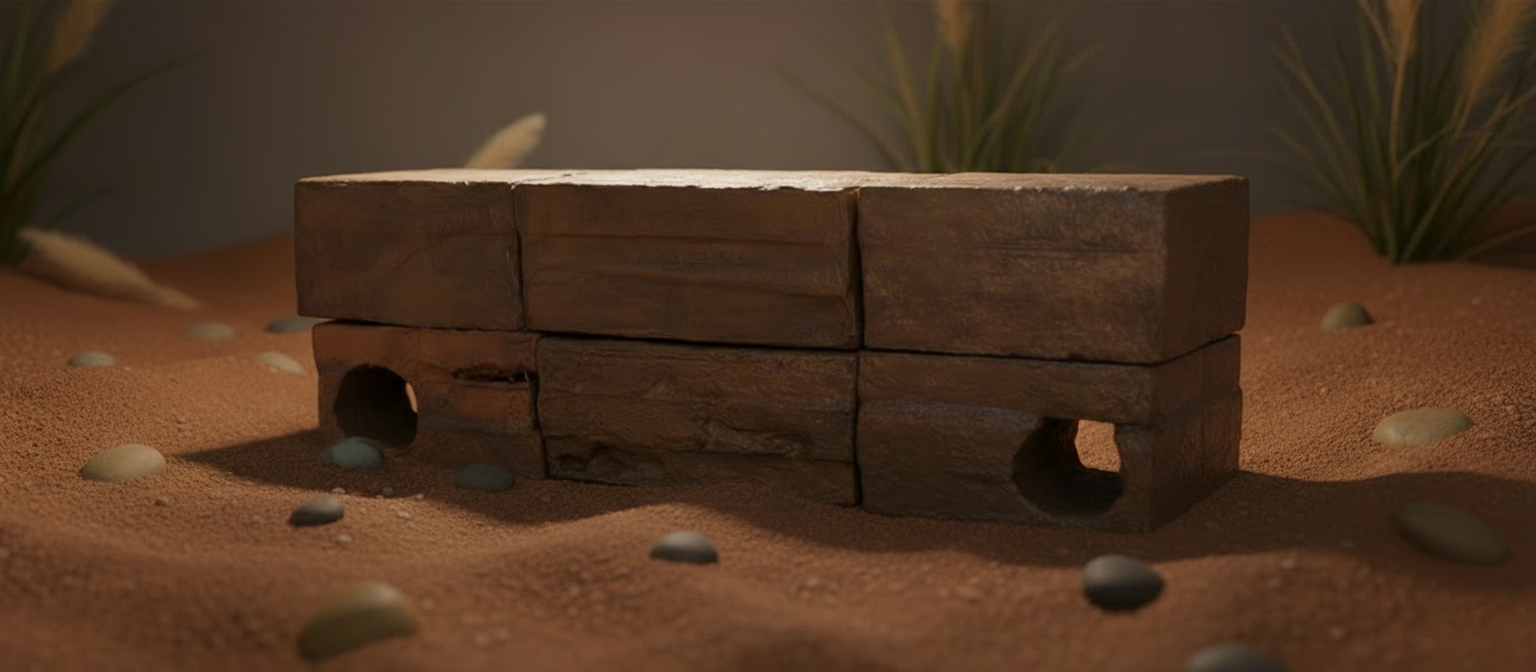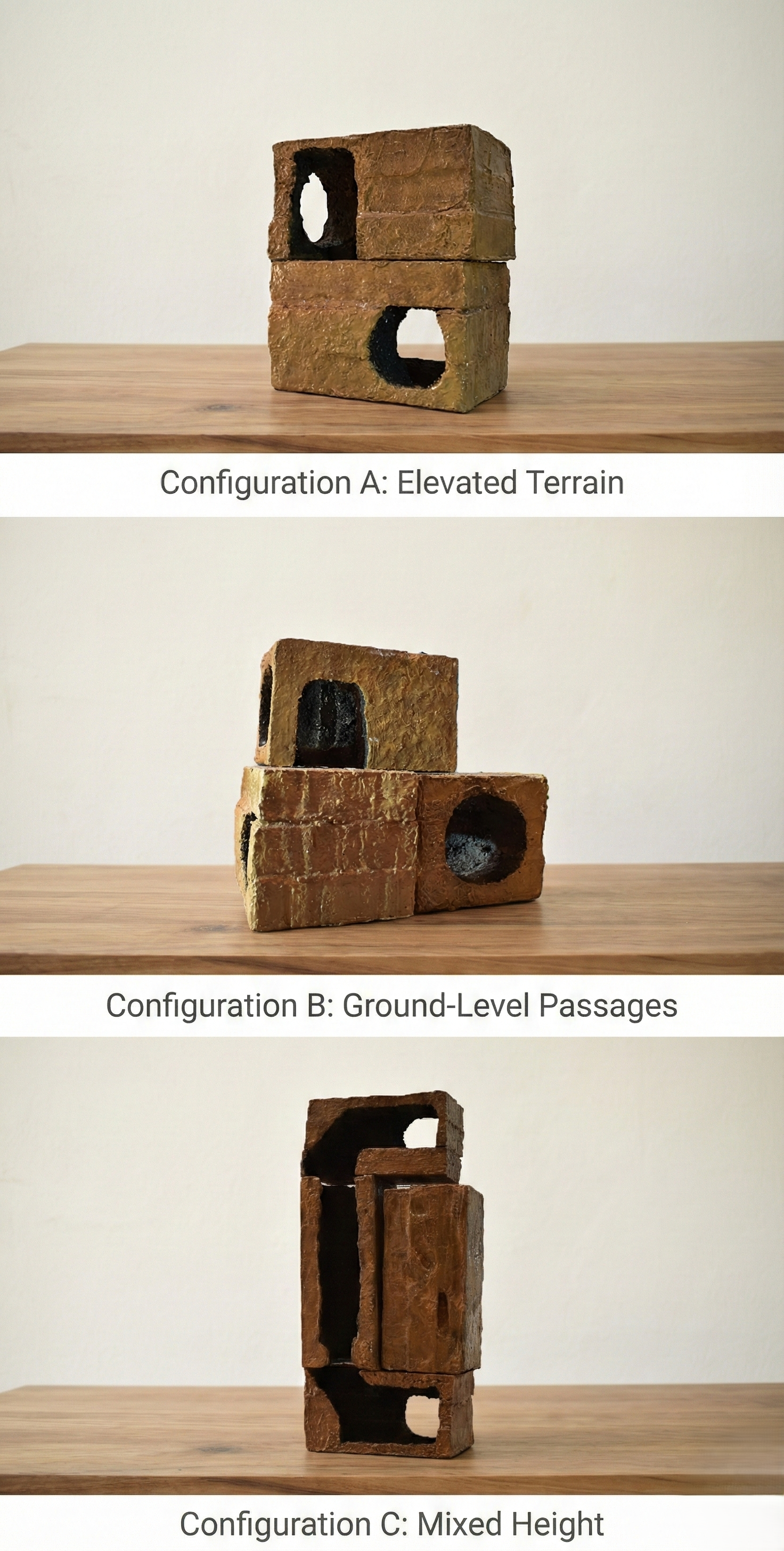Why Desert Geology Matters for Geckos
Leopard geckos evolved across rocky deserts from Iran to Afghanistan. Wild populations navigate volcanic outcrops, eroded boulders, and natural stone formations daily. These surfaces aren't decorative—they're functional biology.
Rough rock texture naturally maintains nail health. Abrasive surfaces support healthy shedding cycles. Cool stone refuges provide thermoregulation when desert temperatures spike. Your gecko's body expects these features because evolution shaped them over millions of years.
Generic pet products ignore this biology. Smooth plastic surfaces can't replicate what volcanic basalt provides naturally.
The Educational Experience
Each block contains crushed basalt from leopard gecko native ranges. This isn't symbolic—it's the actual geology your gecko's ancestors interacted with for thousands of generations.
Your child learns real earth science during weekly habitat maintenance. Where does volcanic rock come from? How do deserts form? Why do some animals thrive in extreme heat while others can't survive there? These questions emerge naturally when you're handling geology from another continent.
Think of it like a rock collection that's also a functional animal habitat. Museum specimens sit behind glass. Your family's leopard gecko lives inside the lesson.
Modular System for Growing Minds
Six magnetic blocks connect in multiple configurations. Your child reconfigures the habitat during cleaning—spatial reasoning practice disguised as pet care. No two setups look identical because natural terrain varies.
This design philosophy mirrors how elementary teachers approach earth science. Start with concrete experience (handling actual rocks). Build to abstract concepts (why basalt forms from lava). Connect to living systems (how animals adapted to rocky environments).
The modular approach creates something else valuable: room for complexity as your child grows. This foundation supports deeper learning about architecture, cultural history, and advanced geography when they're developmentally ready.
Material Choices That Respect Biology
XPS foam cores provide thermal stability—heat doesn't penetrate quickly. Clay exteriors with embedded stone fragments create authentic texture. Bio-based EcoPoxy sealing (54% plant-derived, low-VOC) protects structural integrity while maintaining air quality.
We follow wabi-sabi design philosophy. Natural variation beats plastic uniformity every time. Wild geckos don't navigate perfectly smooth surfaces. Neither should captive ones.
Every material decision serves two masters: your gecko's biological needs and your family's educational growth. When those priorities conflict with manufacturing convenience, biology wins.
What Your Elementary Student Gains
Climate Science: Desert ecosystems, temperature extremes, adaptation strategies
Geology Basics: Volcanic rock formation, erosion patterns, thermal properties
World Geography: Central Asian landscapes, native range mapping, environmental zones
Critical Thinking: Why do certain animals need specific habitats?
Hands-On Learning: Assembling, reconfiguring, maintaining real geological materials
Safe for Young Learners
Lightweight blocks designed for supervised child handling. Non-toxic, fume-free materials protect indoor air quality. Open-back architecture allows thorough cleaning—preventing bacterial buildup that harms reptile health.
Investment in Education & Welfare
Complete Set (6 blocks): $125
Individual blocks: $30 each
Dimensions: 26" L × 5" W × 10" H (assembled)
This isn't a pet product purchase. It's an educational investment that happens to house a living animal with complex biological needs your child learns to meet.



